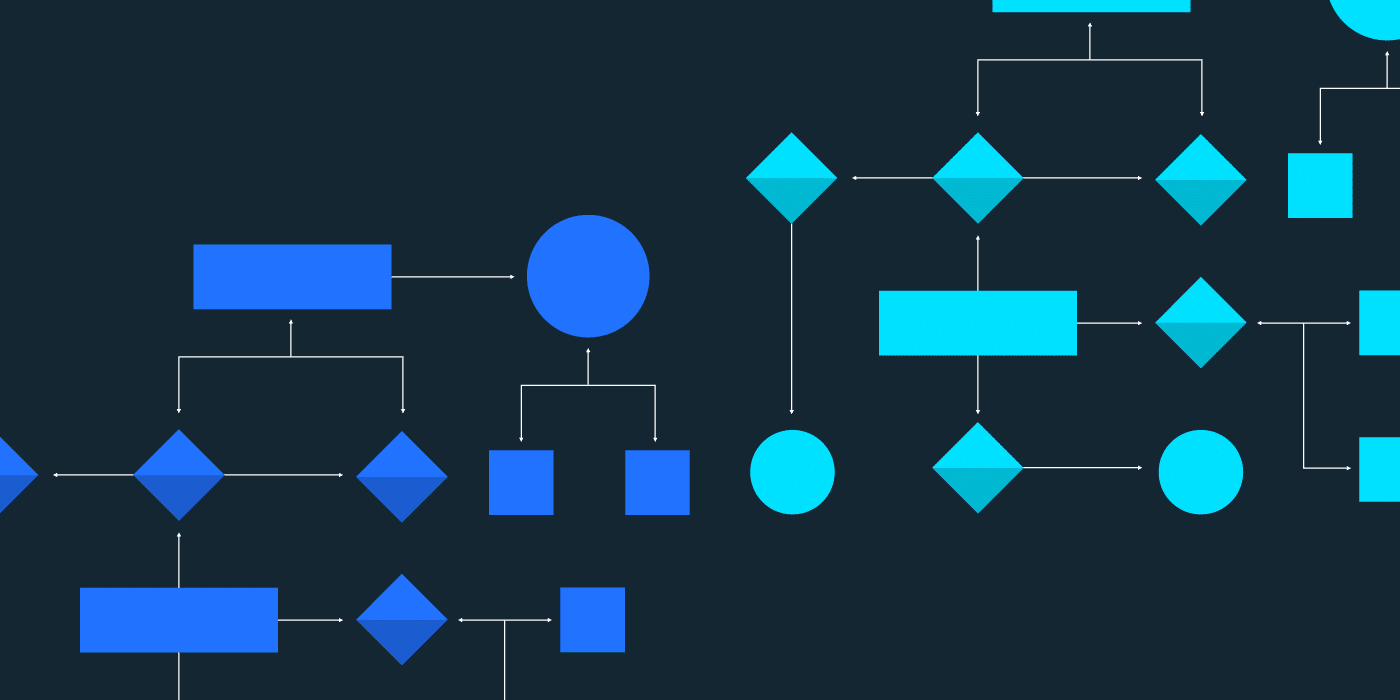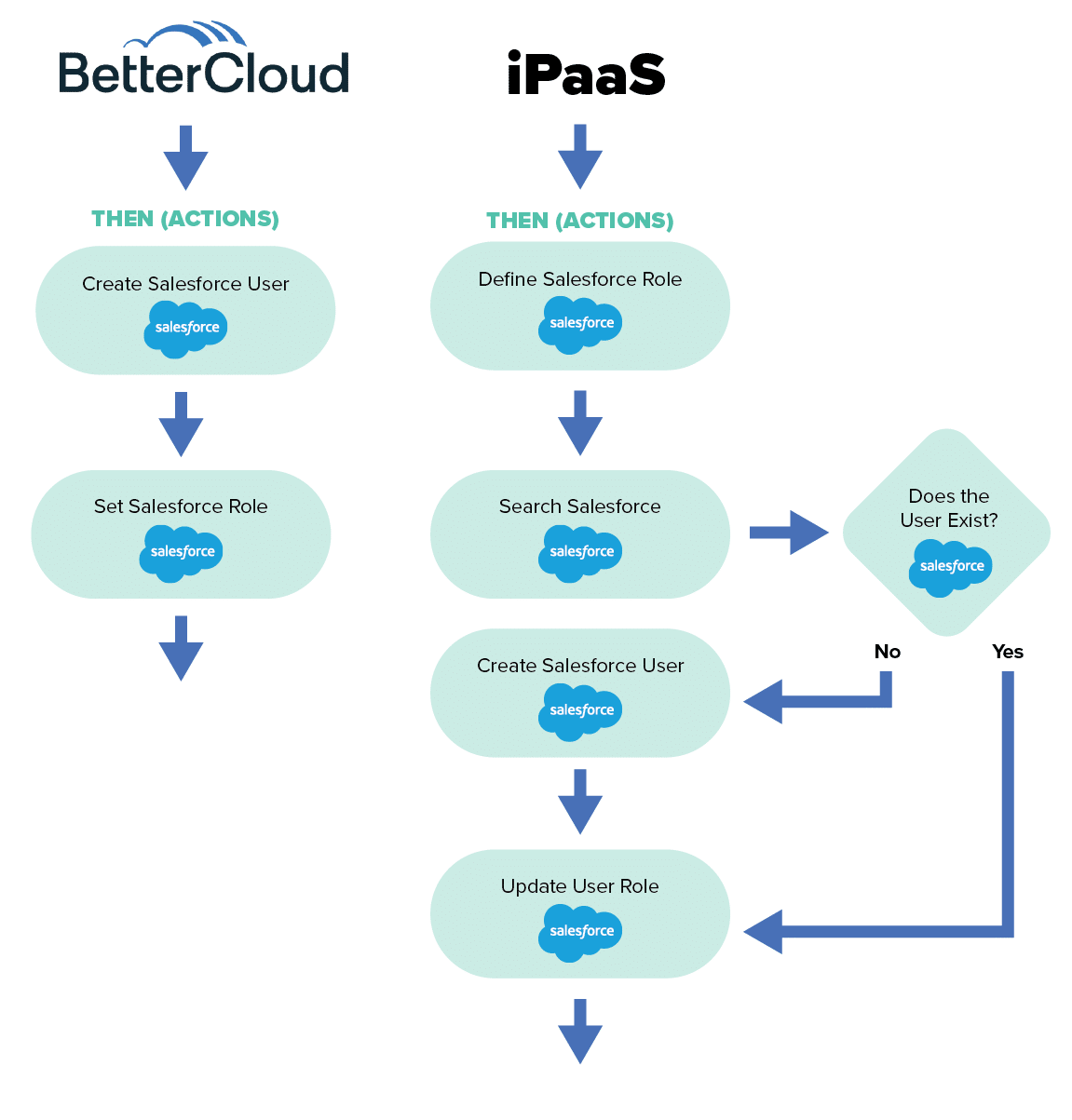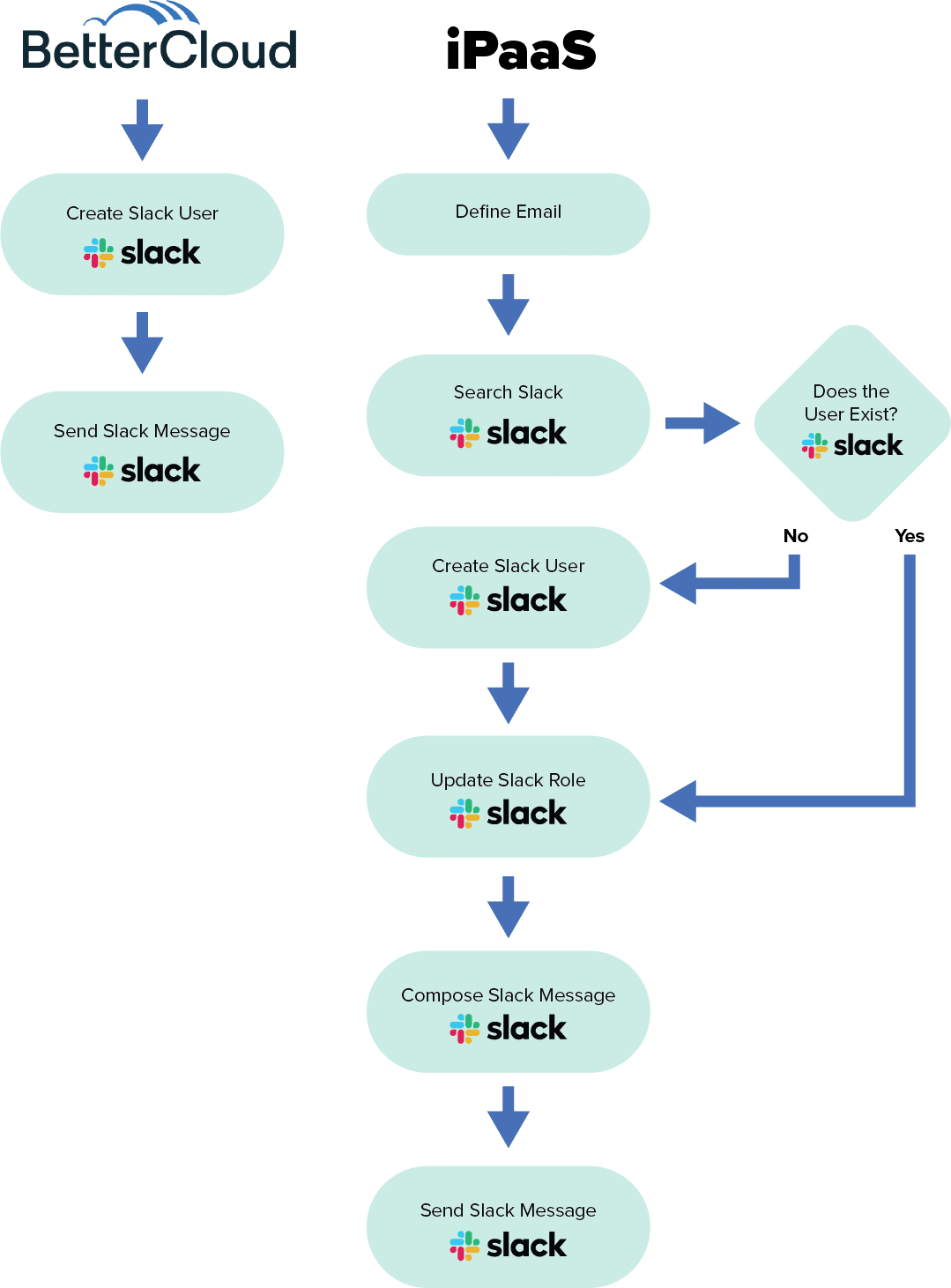iPaaS vs. SMP: Which One Is Right for My IT Department?
January 26, 2022
6 minute read

Automation has become a game-changer for overworked IT managers with lean teams. When IT teams automate their day-to-day tasks, they save hours of time every day, make fewer mistakes, enjoy shorter ticket queues, and can take on more strategic work.
So why isn’t every IT department fully automating everything already? The answer: it used to be (and sometimes still is) very difficult to do without knowing how to write code.
The good news: many platforms—especially no-code ones—are making it far simpler to automate tasks and orchestrate processes. The not-so-good news: the marketplace is very complex, with lots of acronyms to sort through.
Two platforms for IT automation: iPaaS and SMP
Two types of providers stand out in this crowded market: iPaaS and SMPs. Each offers powerful solutions for automating tasks across hundreds of SaaS apps.
In this article, we’ll explore the difference between iPaaS and SMP tools, and their automated workflows.
To start, let’s take a quick look at Gartner’s definition of an iPaaS and an SMP:
An iPaaS (Integration Platform as a Service) is a suite of cloud services enabling development, execution and governance of integration flows connecting any combination of on premises and cloud-based processes, services, applications and data within individual or across multiple organizations.
SMPs (SaaS management platforms) allow IT operations administrators to manage the day-to-day operations for Microsoft Office 365, Google G Suite and other frequently used SaaS applications. SMPs allow IT administrators to manage application policies, take corrective action, track application usage and automate IT administrative tasks.
Despite the differences in their definitions, both an iPaaS and an SMP can bring IT the myriad benefits of automation. At their core, these platforms are designed to integrate with hundreds (if not thousands) of SaaS apps.
At a glance, both can seem like perfectly good solutions for building workflows that automate manual, repetitive SaaS management tasks. As we explore each one in detail, some important differences in usability become clear.
A tale of two workflows: iPaaS vs. SMP
The easiest way to show a key difference between an iPaaS and an SMP is to examine a workflow up close. In this example, we’ll compare the structure of workflows built by BetterCloud (an SMP) with one created in a popular iPaaS.

The illustration above shows a simple onboarding process we want to automate. When someone is added to Okta (or another IDaaS), and if that person is in the Sales department, we want to first provision that user in Salesforce and set their Salesforce role. Then, we’ll provision the user in Slack and send them a notification.
In both the iPaaS and BetterCloud, the workflows start off identically. Both platforms listen for the workflow trigger, and then check for the IF condition.

After checking to see if the new user is in the Sales department, however, both workflows start to look very different.

In the example above, you can see that an iPaaS needs much more detailed input from the person building the workflow to accomplish the same tasks.
Why is this? In short, BetterCloud has done more of the work already. BetterCloud’s patented operational intelligence system securely ingests, stores, and analyzes SaaS app data, removing the need to continually query apps. BetterCloud can simply create a user in Salesforce and set that user’s role because it already knows if the user exists. The end result is a simpler workflow: Just two commands in its no-code builder.
iPaaS platforms are purpose-built to serve as connectors that pass data between apps, so they don’t ingest and analyze app data the way an SMP does.
Without any stored data to refer to, the iPaaS must take the extra step of checking to see if a user already exists in order to complete the workflow.
Let’s take a look at the last part of the process, where we provision the user in Slack and send them a notification.

For this section, BetterCloud’s workflow executes the two remaining two commands and voila, the workflow is completed.
And yet again, the iPaaS requires a lot more steps to complete these tasks. Because the iPaaS isn’t storing data about Slack, it must check to see if a user already exists before creating it. It also must first compose and then send the Slack message.
For a basic workflow that only incorporated three apps, the iPaaS required 14 discrete steps, including two database queries. BetterCloud only required six.
As these workflows scale to include more apps and tasks, it is easy to see how managing the iPaaS workflow becomes a very complicated job. Worse, the constant need for queries eats up a lot of bandwidth and can quickly exceed API call limits.
In order to create a workflow that works in an iPaaS, you also need a deep understanding of the logic required to perform each task. To automate a process, you need to know what specific commands to send to each SaaS app, and what order they should be sent in.
Unlike an SMP with built-in logic and operational intelligence, the iPaaS just provides a visual overlay for organizing and executing processes. Each query shown in the example above had to be added in manually by the builder of the workflow.
Low-code vs. no-code: two ways to automate
The differences in the iPaaS and SMP workflows provide a good example of how low-code and no-code platforms approach automation.
Built for developers, low-code platforms provide a visual (sometimes even “drag and drop”) layer over code, removing the need to actually write it. Low-code platforms offer developers a faster way to stitch together individual pieces of functionality into a larger process.
Low-code platforms, however, do not store or analyze data from the apps they are connected to. This is where the need for coding know-how comes in. Even the most straightforward tasks, such as “create a user,” require very specific logic and structure from the person building the workflow. The person building the workflow must know when to query, what to do with the query results, and build responses to every potential outcome from the query.
The advantage of low-code platforms is their ability to create very complex automations across nearly any app. This flexibility, however, comes with a steep learning curve. Managing changes or updates can be time-consuming, and may even require contractors or other resources.
No-code platforms are often purpose-built for specific environments, and can perform more robust actions in a single step. They allow users without coding backgrounds to automate tasks easily, while keeping more of the process “behind the scenes.” If you need your workflow to “create a user,” BetterCloud allows you to do it in a single step.
With an SMP like BetterCloud, you simply need to know what you want to do, not how to do it. This allows IT teams to set up automated workflows faster, achieving greater time-to-value.
Connecting systems vs. automating SaaS management
At the end of the day, an iPaaS and an SMP are built to provide value in very different environments. iPaaS platforms are designed for ultimate flexibility, facilitating connections and moving data between as many apps and systems as possible. By providing a low-code way to connect modern SaaS apps with legacy on-prem systems, an iPaaS can automate what an SMP cannot.
To solve the everyday challenges faced by IT managers in modern, SaaS-first environments, an SMP like BetterCloud offers a far more manageable solution. Even if an IT environment includes legacy systems, an iPaaS can even be used alongside an SMP to keep complexity and resource use low.
There are clear benefits to using a platform purpose-built for IT, not developers. The automation needs of IT, such as onboarding, offboarding, role changes, and file security, require a targeted, scalable solution to truly achieve operational efficiency.
With prebuilt templates and out-of-the-box integrations with the most popular SaaS apps in use today, BetterCloud enables anyone in IT to build and manage workflows that save hours of time, reduce errors, and improve security.
As SaaS portfolios grow, IT teams will need ways to automate more actions in more apps. BetterCloud’s API and extensive customization capabilities were built for just this reason—offering much of the flexibility an iPaaS provides.
Interested in learning more about how to automate IT tasks with an SMP? We invite you to browse our IT efficiency resource library to learn how to use BetterCloud to automate everything from user lifecycle management to file security.






